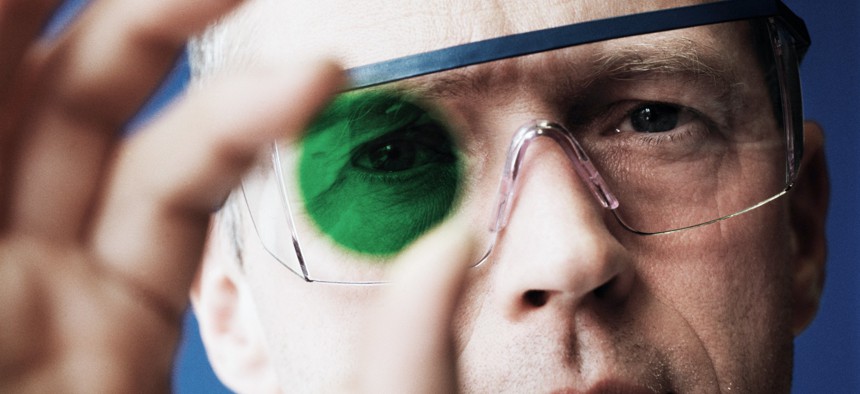Not Super Creative? Try This Approach

"One of the study's implications is that creativity is not something that's only accessible to people we think of as 'creatives,'" says lead author Lily Zhu. Henrik Sorensen/Getty Images

Connecting state and local government leaders
COMMENTARY | Looking at emotional situations in a different way can boost creativity among people who tend to think more conventionally, a study finds.
In a set of experiments, researchers found that conventional thinkers, those who rank low on openness to new ideas and experiences, came up with more creative ideas than peers after they practiced “emotional reappraisal.” This means viewing a situation through another emotional lens, such as trying to see an anger-inducing event as one that is neutral or hopeful.
The study in the journal Organizational Behavior and Human Decision Processes indicates that that creativity can be trained.
“One of the study’s implications is that creativity is not something that’s only accessible to people we think of as ‘creatives,'” says lead author Lily Zhu, an assistant professor in Washington State University’s Carson College of Business. “Whenever we break away from our existing perspective and try to think about something that’s different from our initial reaction, there’s a creative element to it. If we can practice or train that flexible-thinking muscle, it may help us be more creative over time.”
For the study, Zhu and coauthors Chris Bauman and Maia Young from University of California, Irvine, conducted a survey and two similar experiments with three different sets of people. The first survey of 279 college students revealed that people who tended to be more creative, ranking high on openness to new ideas, also tended to practice emotional reappraisal regularly.
In an experiment with 335 people recruited through a crowdsourcing platform, the participants were first ranked on their openness levels and then shown a film scene designed to elicit anger. While viewing, they got different instructions: to suppress their emotions, think about something else to distract themselves, or to try emotional appraisal—looking at the scene through another lens. A portion also received no instruction on how to regulate their feelings.
After viewing the film, the participants were asked to come up with an idea to use a space in their building being vacated by a cafeteria that was going out of business. Those ideas were then evaluated by a panel of experts who did not know anything about the participants. Ideas such as using the space for “napping pods” or opening a childcare facility were considered highly creative whereas opening a similar cafeteria or a food franchise were considered low in creativity.
The next experiment had a different group of 177 participants write about an experience that made them angry, rather than viewing a film. They were then tasked with either writing about it again from a different emotional perspective or writing about something else as a distraction.
In both experiments, conventional thinking participants who tried emotional reappraisal came up with more creative ideas than other conventional thinkers who used suppression, distraction, or no emotional regulation strategy at all.
Notably, for participants who were considered creative thinkers to begin with, emotional reappraisal did not seem to have much effect on their creativity. The authors suggest that since creative people already tend to practice emotional reappraisal regularly, doing more of it doesn’t have as much of an impact, like adding more gas to a car that already has fuel.
The findings have implications for improving business productivity, the researchers contend, since it appears possible to tap the knowledge and experience of more employees by encouraging their creativity, even those in conventional occupations like accounting, insurance adjustment, or data analytics.
Zhu suggests that supervisors could develop trainings to cultivate creative thinking skills in employees. Individuals can also practice emotional reappraisal when confronted with a crisis or challenge instead of suppressing negative emotions.
“Negative emotions are inevitable in the workplace,” Zhu says. “The question is not do we want negative emotions, or not? The question is: how can we better deal with them in a productive, healthy way? Part of the implications of this study is that we can use negative emotions in our everyday life as opportunities to practice flexible thinking.”
Source: Washington State University

NEXT STORY: New York City Will Cut Some of Its 21,000 Vacant Government Positions




